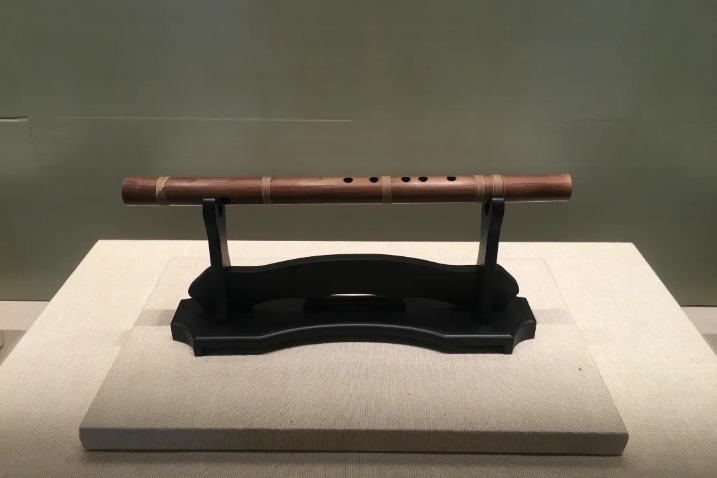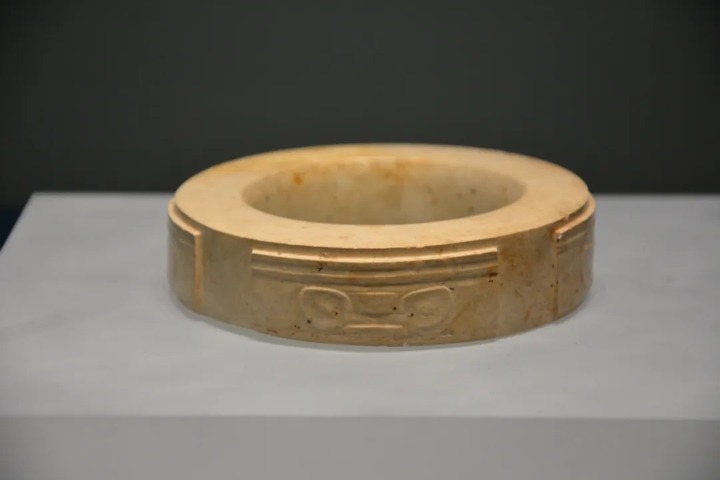National Maritime Museum of China

National Maritime Museum of China
国家海洋博物馆
Address: 377 Haixuan Road, Zhongxin Eco-Town, Binhai New Area, Tianjin
Website: www.hymuseum.org.cn (Cn)
Hours: 9:00-16:30 (entry until 16:00; only for reservation in trail operation)
Closed Mondays (except for national holidays)
General admission: Free (passport required for entry)
Online reservation:
www.hymuseum.org.cn/pw/person/index, or
official WeChat account “China Maritime Museum”(Cn)
Tel: (+86-22)67185138/5139/5135/5137

Aimed at ocean relics collection, display and marine research and education, the National Maritime Museum of China, the first comprehensive ocean-themed museum in the country, is located in the Binhai New Area of north China’s Tianjin and opened to the public on May 1, 2019. Covering a waterside area of 15 hectares, it is distinguished for the marine elements of its design, including streamline moulds, panels resembling scales and trusses in the shape of fish bones, which arouse vivid images of life in the sea.
Collecting marine archaeological finds and showcasing relevant research achievements at home and abroad, the museum houses nearly 7,000 objects that mainly consist of fossils, specimens and the relics of marine facilities. There are five permanent exhibitions. Displaying more than 1,000 fossil specimens, the first illustrates the evolution of both the land and the ocean over 4.6 billion years in geochronological sequence. The specimens from Chengjiang Fossil Site in Southwest China’s Yunnan province, currently known as the most biologically diverse biota from the early Cambrian Period, are prominently displayed. The second exhibition profiles the lives of Mesozoic reptiles indicating that the marine world served as the incubator for all terrestrial life, which is reflected by the models of Xingyi Fauna from Southwest China’s Guizhou province, a diverse and well-preserved fossil biota formed in the Late Triassic period. The third exhibition showcases more than 5,000 specimens which not only reveal the beauty of oceanic life, but also serves as a reminder of the urgent need for marine conservation. Its precious collection, including specimens of the largest whale shark found in East China’s Shandong province, the rare plastinated specimens of pregnant smooth hammerhead sharks and a great variety of samples of Chinese marine invertebrates, will help visitors to broaden their knowledge of the marine world. The fourth exhibition illustrates discoveries since the Age of Exploration (c.15th century-17th century) through views of global landscapes, and the fifth introduces the accomplishments of astronomical exploration to clarify its connection with marine research and navigation. The museum has setup a children-oriented section to provide them with an enjoyable educational experience.
Other recommended objects displayed in permanent exhibitions include the stromatolite found in Tianjin, the layered rock structure which witnessed the earliest process of oxygen production in the world; fossils of trilobites, the most plentiful and diverse group in the Cambrian seas; fossils of ammonites, the most representative creatures from the Carboniferous to the Cretaceous; the fossil of anichthyosaur (Yu Long), the tyrant of the Mesozoic ocean; and the plastinated specimen of a colossal squid, the world's second largest mollusk.
Last Updated: Sep 09, 2019




